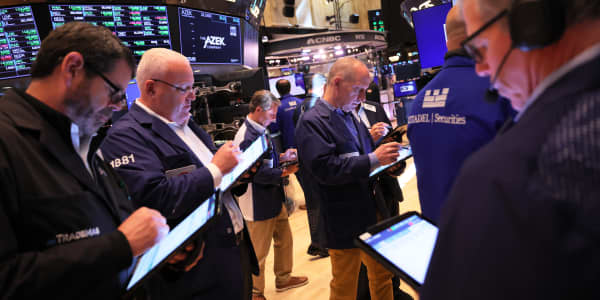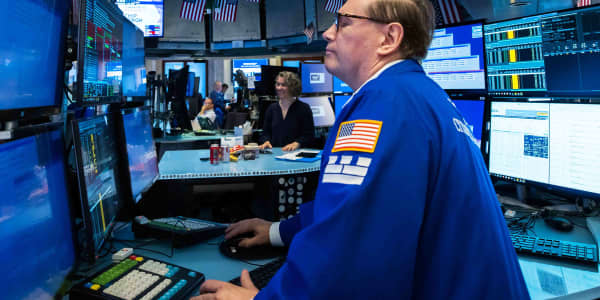(The following article is a CNBC Pro free preview. Click here to subscribe).
Equity strategists at Morgan Stanley and Bank of America Merrill Lynch told clients Tuesday the stock market is pricing in a high risk of a recession.
"Our best guess is that 50 percent of an average U.S. recession is already priced into the S&P 500," wrote Adam Parker, chief equity strategist at Morgan Stanley, whose bear-case target for the index stands at 1,600 or 15 percent lower from here.
Similarly, Bank of America Merrill Lynch equity strategist Savita Subramanian also said the benchmark is priced as if there is a 50-50 shot of a recessionary period this year.
Read MorePRO Talks: Beat the market with Martin Sass
A rapid capitulation in global markets in 2016 due to concerns about an economic slowdown in China and plummeting energy prices has already pushed the S&P 500 into correction territory, down more than 10 percent from its high last year.
Likewise, the average stock in the S&P index is in a bear market, down on average 25 percent from its 52-week high, according to data from FactSet.
To be sure, both strategists put the actual odds of a recession at much lower levels but they still believe clients should be positioned defensively.
With narrow market breadth on the horizon, increased economic woes from China and other nations, tighter financial conditions, weak oil prices and uncertainty over the direction of interest rates, the strategists think volatility will likely remain.
Here's what they are telling clients to do to weather this volatility and protect themselves in case of a recession.
Merrill's Subramanian wrote the following in her report:
"Volatility may be here to stay, and high-quality stocks typically outperform low-quality stocks in volatile environments. And high-quality stocks have traded at a discount to low-quality stocks — which have been buoyed by fiscal and monetary stimulus — since the Tech Bubble, but are starting to re-rate. We expect this normalization in multiples to continue, and believe high-quality stocks will eventually trade at a premium."
She thinks the best strategy for investors is to stick to big-cap, high-quality, cash-rich stocks that can weather the potential turbulence ahead.
Among the stocks featured as potential candidates by Subramanian, the chart below shows the ones with high credit ratings from Standard & Poor's and solid cash reserves in relation to their market caps.
Some of the names that meet these criteria include Coca-Cola, Procter & Gamble and Johnson & Johnson, according to her analysis.
Investment ideas from Morgan Stanley
Morgan Stanley's Parker believes earnings will be one of the main catalysts that could determine the market's future trajectory. Here's what he wrote in his report:
"If earnings grow, we will probably see the market appreciate year over year, especially from these levels. We think that is the highest probability bet. To the extent this growth scare continues, and investors think there could be a decline in earnings, volatility will persist."
Parker thinks that multiple expansion could also occur if investors look around the world and acknowledge the U.S. offers reasonable growth compared to other regions, and equities, according to his views, offer "much more upside than bonds," even when investors account for the increased volatility.
Below are some of his key investment themes based on his 2016 outlook.
- One of those groups is credit card companies, which have been unfairly punished by investors due to negative expectations on the consumer and the future economic path, according to Parker. He is bullish on Capital One Financial, American Express, Discover Financial Services, Synchrony Financial, MasterCard and Vantiv.
- The decline in oil prices will benefit the low-end consumer the most, the strategist said, pointing to Ross Stores as a potential winner from this trend.
- With the defense budget in place to remain steady, Parker recommends considering Northrop Grumman.
- Parker also favors United Technologies over 3M, noting a "substantial" valuation gap between these two stocks.
- The investor has also increased his exposure to utilities by adding to positions in companies such as Sempra Energy and NextEra Energy.
While strategists recommend a largely defensive posture, both Subramanian and Parker forecast gains of 16 percent from here, should the S&P 500 meet their respective target estimates of 2,200 and 2,175.




